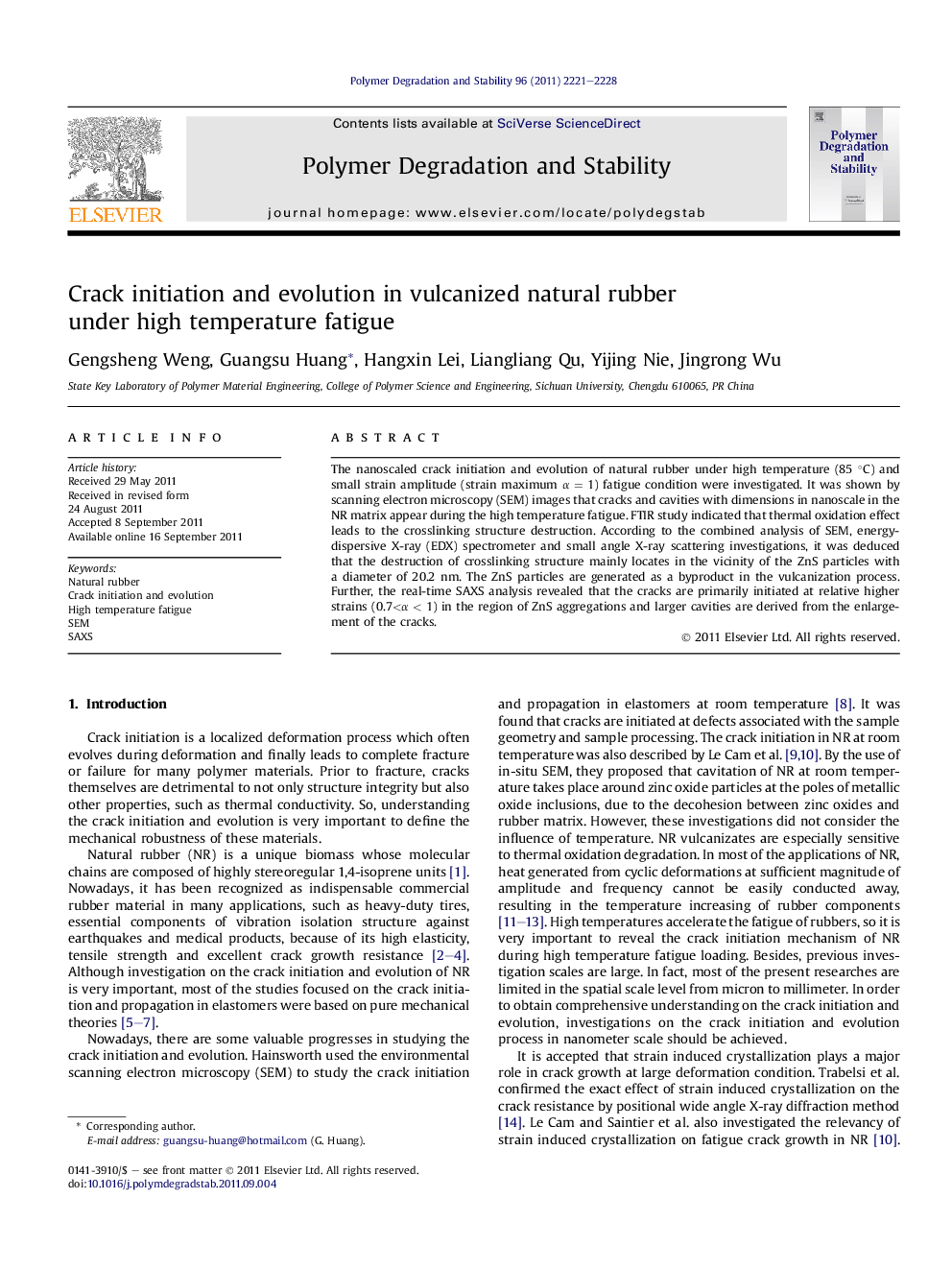| Article ID | Journal | Published Year | Pages | File Type |
|---|---|---|---|---|
| 5203252 | Polymer Degradation and Stability | 2011 | 8 Pages |
The nanoscaled crack initiation and evolution of natural rubber under high temperature (85 °C) and small strain amplitude (strain maximum α = 1) fatigue condition were investigated. It was shown by scanning electron microscopy (SEM) images that cracks and cavities with dimensions in nanoscale in the NR matrix appear during the high temperature fatigue. FTIR study indicated that thermal oxidation effect leads to the crosslinking structure destruction. According to the combined analysis of SEM, energy-dispersive X-ray (EDX) spectrometer and small angle X-ray scattering investigations, it was deduced that the destruction of crosslinking structure mainly locates in the vicinity of the ZnS particles with a diameter of 20.2 nm. The ZnS particles are generated as a byproduct in the vulcanization process. Further, the real-time SAXS analysis revealed that the cracks are primarily initiated at relative higher strains (0.7<α < 1) in the region of ZnS aggregations and larger cavities are derived from the enlargement of the cracks.
